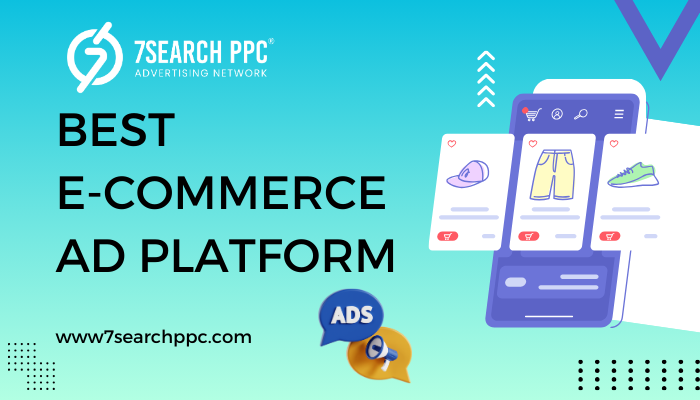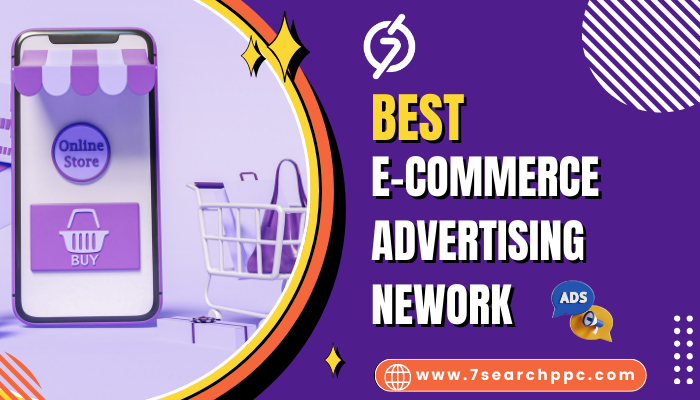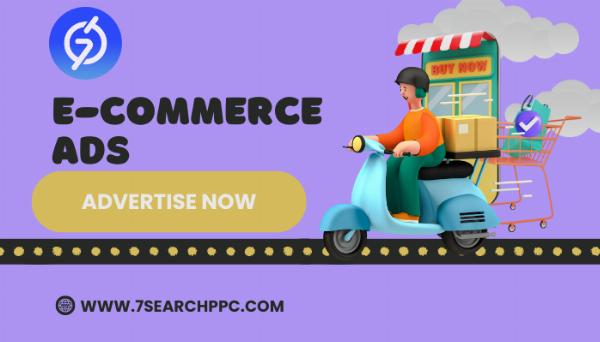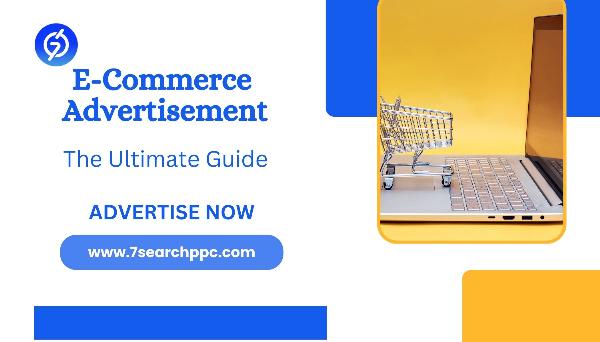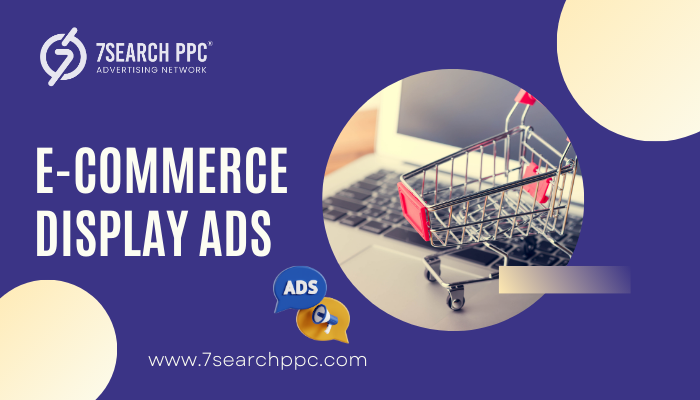 Newsletter Copywriting – Emails That Convert, Not Bore!
Newsletter Copywriting – Emails That Convert, Not Bore!
What Are the Advantages of using E-commerce PPC Ads
Written by E-commerce Advertising » Updated on: June 17th, 2025

Imagine you’ve just launched your online store, filled with amazing products, but your website isn’t getting the traffic you expected. It’s frustrating, right? You’ve put in the hard work, but it seems like no one is noticing. This is a common struggle for many e-commerce businesses. While organic traffic is great, it can take a long time to build up. So, what’s the solution?
This is where E-commerce PPC Ads come in. These ads are a powerful way to get your store in front of the right audience at the right time. With PPC (Pay-Per-Click), you can target potential customers searching for products like yours and drive traffic to your site instantly. In this blog, we’ll dive into the advantages of using E-commerce PPC ads and why they’re essential for growing your online store.
What Are E-commerce PPC Ads?
E-commerce PPC Ads are a form of paid advertising where businesses pay for each click on their ad. The goal is to drive potential customers to your e-commerce site. These ads appear on search engines like Google, social media platforms like Facebook, and even within shopping platforms like Amazon. PPC ads are highly effective because you only pay when someone clicks on your ad, ensuring you get value for your advertising spend.
How Do E-commerce PPC Ads Work?
The concept behind PPC ads is simple: you bid on specific keywords related to your products. When a user searches for those keywords, your ad appears at the top of the search results or on relevant websites. If they click on your ad, they’re directed to your website, and you pay for that click. This makes PPC a fast and efficient way to drive targeted traffic to your online store.
Advantages of Using E-commerce PPC Ads
Now that you understand what PPC ads are, let’s explore why they’re a game-changer for online businesses.
- Immediate visibility: Unlike organic search results, which take time to climb the rankings, PPC ads give you instant visibility. As soon as you launch your campaign, your ads are live.
- Targeted reach: PPC platforms allow you to target specific audiences based on demographics, interests, and search behavior. This ensures your ads are shown to people most likely to buy your products.
- Control over ad spend: One of the best parts about PPC is that you have complete control over your budget. You set how much you’re willing to pay for each click and can adjust your spend based on performance.
Key Benefits of E-commerce PPC Ads for Online Stores
When implemented correctly, E-commerce PPC Ads can provide a wide range of benefits for online stores:
- Increase in sales and conversions: PPC ads bring qualified traffic to your site, which increases the chances of making a sale.
- Enhanced brand visibility: Even if users don’t click on your ad, just having your brand appear in the search results can boost brand awareness.
- Measurable results and real-time tracking: PPC platforms offer detailed analytics, allowing you to track the performance of your campaigns in real-time.
Types of E-commerce PPC Ads
There are several types of E-commerce PPC Ads you can run:
- Search ads: These are the most common type of PPC ads and appear at the top of search engine results.
- Display ads: These are visual ads that appear on websites within the display network, helping you reach a wider audience.
- Shopping ads: Specifically designed for e-commerce, shopping ads display your product images, prices, and store information directly in the search results.
Best Ad Network for E-commerce Businesses
Choosing the right ad network is crucial for the success of your campaigns. Some of the best ad networks for e-commerce include:
- Google Ads: Great for search, display, and shopping ads.
- Facebook Ads: Excellent for targeting users based on interests and demographics.
- Amazon Ads: Ideal for e-commerce businesses selling on the Amazon platform.
Each network has its strengths, so it's essential to choose the one that aligns with your business goals and target audience.
Optimizing Ecommerce PPC Ads
To get the best results from your E-commerce PPC Ads, you need to optimize them continuously. Here’s how:
- Keyword research and selection: Choose relevant keywords that your potential customers are likely to search for.
- Crafting compelling ad copy: Your ad copy should be clear, concise, and persuasive, enticing users to click.
The Role of E-commerce Marketing in PPC Success
PPC ads work best when combined with other marketing strategies. For instance, you can use e-commerce marketing strategies like SEO and content marketing to support your PPC campaigns. Additionally, PPC is highly effective for retargeting customers who’ve visited your site but didn’t make a purchase.
E-commerce Ad Services: What to Look For
When choosing e-commerce ad services, look for:
- Professional management: Hiring experts who can optimize and manage your campaigns can save time and ensure better results.
- Tools and features: Look for services that offer advanced features like A/B testing, audience segmentation, and real-time reporting.
How E-commerce PPC Ads Drive Sales
The main goal of E-commerce PPC Ads is to drive sales by bringing targeted traffic to your store. By tracking the customer journey from click to conversion, you can identify which ads and keywords are driving the most revenue, allowing you to focus on what works best.
Challenges with E-commerce PPC Ads
Despite their benefits, PPC ads come with some challenges:
- Ad competition: The more competitive your industry, the higher the cost-per-click (CPC).
- Common mistakes: These include not setting a clear objective, neglecting ad copy, or not targeting the right audience.
E-commerce Ad Campaigns: Tips for Success
To run successful e-commerce ad campaigns, follow these tips:
- Set a clear objective: Know what you want to achieve with your ads—whether it’s traffic, conversions, or brand awareness.
- Budgeting and scaling: Start with a manageable budget and scale your campaigns as you see results.
Online Store Advertising: The Future of E-commerce PPC
The future of online store advertising is rapidly evolving with new technologies. Expect to see more AI and automation in PPC ads, which will optimize campaigns for you in real-time. Additionally, personalization and dynamic ads will become increasingly important, allowing you to deliver tailored messages to individual users based on their preferences.
Conclusion
In conclusion, E-commerce PPC Ads offer a fast and efficient way to drive traffic and increase sales for your online store. By leveraging the power of paid advertising, you can get your products in front of potential customers, even in a crowded marketplace. Whether you're new to e-commerce or looking to scale your business, PPC ads are a must-have tool in your marketing arsenal.
FAQs
How much should I budget for E-commerce PPC Ads?
Ans. It depends on your business goals, but starting with 10-20% of your monthly revenue is a good rule of thumb.
Can I run PPC ads on multiple networks?
Ans. Yes, running ads on multiple platforms like Google, Facebook, and Amazon can help you reach a broader audience.
What are the best PPC ad formats for e-commerce?
Ans. Search ads, display ads, and shopping ads are the most effective formats for e-commerce businesses.
How do I measure the success of my PPC campaigns?
Ans. Use metrics like Click-Through Rate (CTR), Conversion Rate, and Return on Ad Spend (ROAS) to measure success.
What are the common mistakes to avoid in E-commerce PPC Ads?
Ans. Avoid common mistakes like not doing proper keyword research, neglecting ad copy, and not optimizing campaigns regularly.
Note: IndiBlogHub features both user-submitted and editorial content. We do not verify third-party contributions. Read our Disclaimer and Privacy Policyfor details.
Copyright © 2019-2025 IndiBlogHub.com. All rights reserved. Hosted on DigitalOcean for fast, reliable performance.


